How to Ensure Quality in Software: 5 Expert Tips
Imagine launching a software project knowing that there's a 75% chance those involved are already doubting its success. This startling statistic reflects a prevalent issue in the IT industry – a lack of confidence in project outcomes. Moreover, a typical software project devotes half its budget to fixing errors after implementation, revealing a deep-rooted challenge in effective project management and execution.
As you prepare to launch your web app or software product, remember that in a competitive market, quality and maintainability are not just desirable but essential. This article will guide you through the importance of quality management in software development, emphasizing that the effectiveness of your process outweighs the sheer number of developers. Get ready to discover five key strategies to elevate your software's quality. Let's begin.
What is quality software development?
Quality software development involves crafting digital products that align with specific expectations and criteria. This process focuses on identifying and resolving defects throughout the development stages while ensuring each product feature is high quality. This concept is often framed around the three core principles known as the '3 C's of Quality Software Development':- Correctness - Ensures the software performs its intended functions accurately and error-free.
- Completeness - This principle ensures that all envisioned features of a software product are developed and operate smoothly.
- Consistency - Refers to the software's performance across various environments and platforms. Consistency is key to software reliability and usability, indicating that different users can reliably use the software under varying conditions.
Join our community of 70,000+ testers around the globe and earn money testing websites and apps in your free time.
What is software quality management?
Software Quality Management (SQM) refers to a comprehensive approach in software development that focuses on ensuring the final product's high quality. It encompasses a trio of fundamental aspects that QA specialists prioritize: quality assurance, quality control, and product testing.
1. Quality Assurance (QA)
Quality Assurance (QA) involves a set of intentional actions and organizational procedures to ensure that the software development process adheres to established standards. The primary focus of QA is on the methodologies used during development, intending to prevent errors before they occur. Standards under QA are established at the beginning, even before the actual software development process starts.
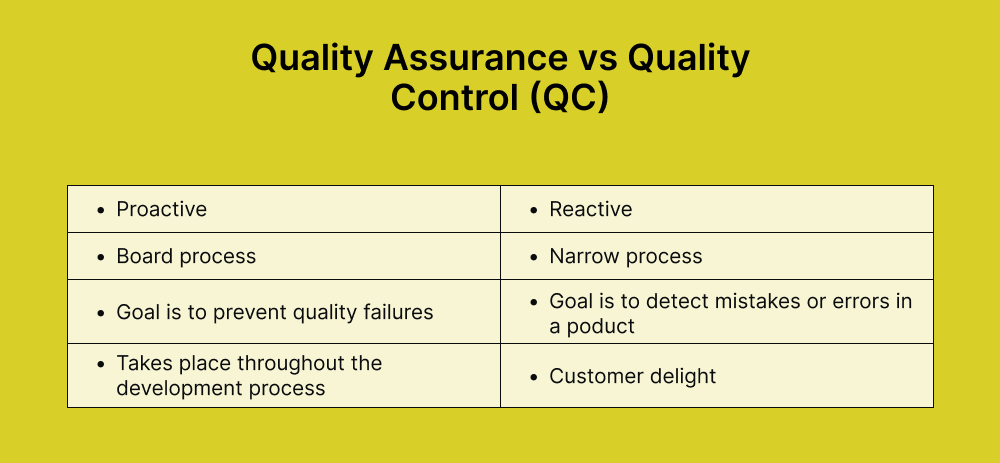
2. Quality Control (QC)
Quality Control (QC) is a process that focuses on the quality of the software product being developed. It comprises specific tasks and procedures related to a particular project. It aims to ensure that the product meets all specified requirements and standards throughout development. In other words, QC is all about verifying and validating the product against predefined criteria to ensure its quality.
3. Product Testing
This is a key component of SQM and involves identifying and resolving technical issues in the developed software. Product testing is crucial for confirming that the application is stable, user-friendly, performs well, and is secure. While it is deeply integrated into the software development lifecycle, the approach to product testing is influenced by both QC and QA strategies. Product testing is essential in various industries. Here are six key types:
1. Concept Testing
It tests the viability of a product idea. Methods include customer surveys or wireframes. It helps in deciding whether to move forward based on customer feedback. Example: A company surveys customers about a new sugar-free cereal to gauge interest.
2. QA Testing
Conducted in a staged environment to ensure the product works as intended. It involves testing scenarios to mimic customer experiences. Example: A restaurant chain tests a new map feature in their app across different systems before public release.
3. A/B Testing
It involves comparing two versions of a product feature to determine which one customers prefer. It's useful for design decisions. Example: A retail company tests two color schemes for a website button to see which attracts more clicks.
4. Market Testing
Releasing a product to a select group to gauge market response helps sales forecasting and marketing planning. Example: A clothing store tests a new line of athletic wear with a group of customers to estimate sales.
5. User Testing
Done post-launch to observe how customers use the product. It informs changes in future updates based on user experience. Example: A photo app company conducts a focus group to understand why a new feature is underused. This feedback might lead to enhancements, such as simplifying the tool to erase image backgrounds for better usability.
6. Regression Testing
Performed after the product was used to ensure new updates didn't affect existing functionalities. Example: A food delivery app is tested for new features to ensure they work without impacting existing functions.
Why does software quality matter?
According to AppsFlyer, 1 in every 2 apps installed are uninstalled within 30 days. That means you have a short time to impress your users before they abandon your app and try something else. So, you need to deliver functionality and quality from the start.
You could rely on the development team to test as they go along, but that only takes time away from their work. That's not to say they aren't involved - after all, code quality will impact the product. Instead, it's time to add a dedicated QA (quality assurance) team to the software engineering process.
Real-life examples of software glitch impact
Slack is widely used in the business world for its ability to connect people. However, even popular and capable software like Slack can experience glitches. A notable issue arose with a feature that permitted direct messages (DMs) to be sent without the recipient's acceptance.
Essentially, this allowed unsolicited messages to enter users' inboxes, leading to complaints about the lack of control over such communications.
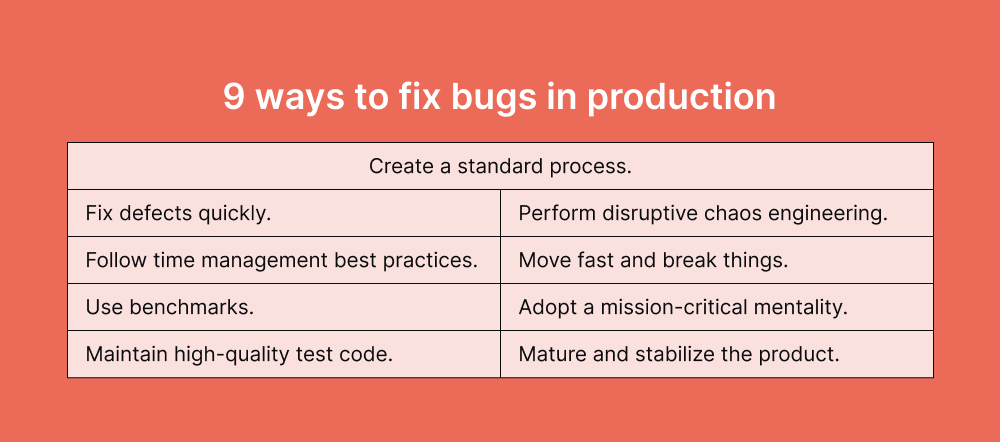
This incident marked a significant challenge for Slack, as it was the first time the platform faced such public scrutiny over its features and updates. In response, Slack implemented updates in early 2022 to enhance user experience. These changes included removing the ability for users to include "Slack" in their usernames. Additionally, there was a controversial event where Slack accidentally deleted shared channels and chat histories, highlighting the potential pitfalls in software development.
Parallel to Slack's issues, Uber also faced a critical bug in France. An error in the app continued to send notifications to a device even after logging out, which inadvertently exposed a man's affair, leading to his divorce and a $45 million lawsuit against Uber. This bug revealed private details to the man's wife after he had previously used Uber on her phone.
5 Expert tips for software quality assurance (SQA)
We decided to speak to tech experts about how they deliver quality so that we can provide you with the best possible insights into producing high-quality software. Here's what they said:
1) Create a quality culture
This is all about fostering the correct environment that will produce quality software. It's not just about the final source code - it's about the culture and the team that builds it. As outlined in Leading Quality: How Great Leaders Deliver High-Quality Software and Accelerate Growth, creating a quality culture is:
1. Understanding the individuals you need to influence: realizing who the decision-makers are in the company and who will be able to influence QA
2. Creating empathy to increase alignment between teams: making sure all teams -from DevOps to sales and marketing - are aligned on a shared view of quality
3. Supporting your quality narrative with evidence: backing up your views with evidence of QA practices improving key quality metrics
4. Cultivating internal champions: ensuring you have advocates of your vision within the company
These four steps will help you align your team, increase cross-functional awareness of quality, and put QA at the forefront of the minds of the SLT. According to Dominic Holt, creating this quality culture is all about hiring the right people to advocate quality:
"In order to ensure quality in software development, it starts with hiring the right people who take an engineering approach to writing software so that anyone can understand how it works rather than just the person who wrote it. Once you have the right people in place, you need to install the right processes and quality checks in order to set appropriate expectations for the team."
- Dominic Holt, CTO, Valerian Technology
2) Put the user first
"Quality is essentially about meeting user expectations. Consistently. Reliably. Confidently."
- Karin Dames, Editor of Teal Times
We know that the end user rules in software development. No matter how great your software system is, your customers will go elsewhere if your UX isn't up to scratch. The average app lost about $33,000 a month in 2019 due to uninstalls, so a dissatisfied user can directly impact your ROI.
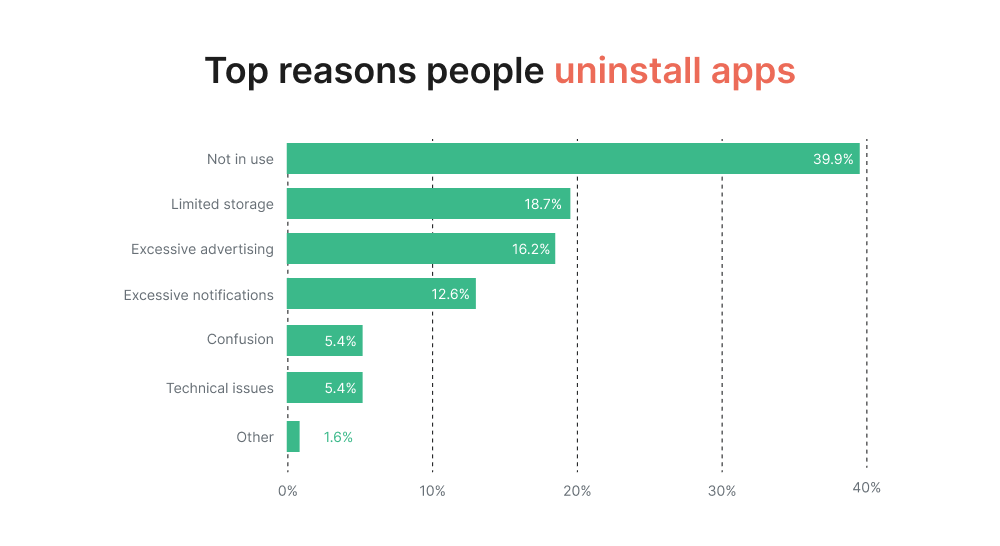
But, sometimes, in the busy periods of release cycles and new updates, the user can get lost in the noise. You might get so tied up checking non-functional requirements that you forget about the importance of the user interface and user requirements. Or maybe you've been so caught up in the details that you've lost track of the big picture and forgotten that portability and privacy need to be factored in.
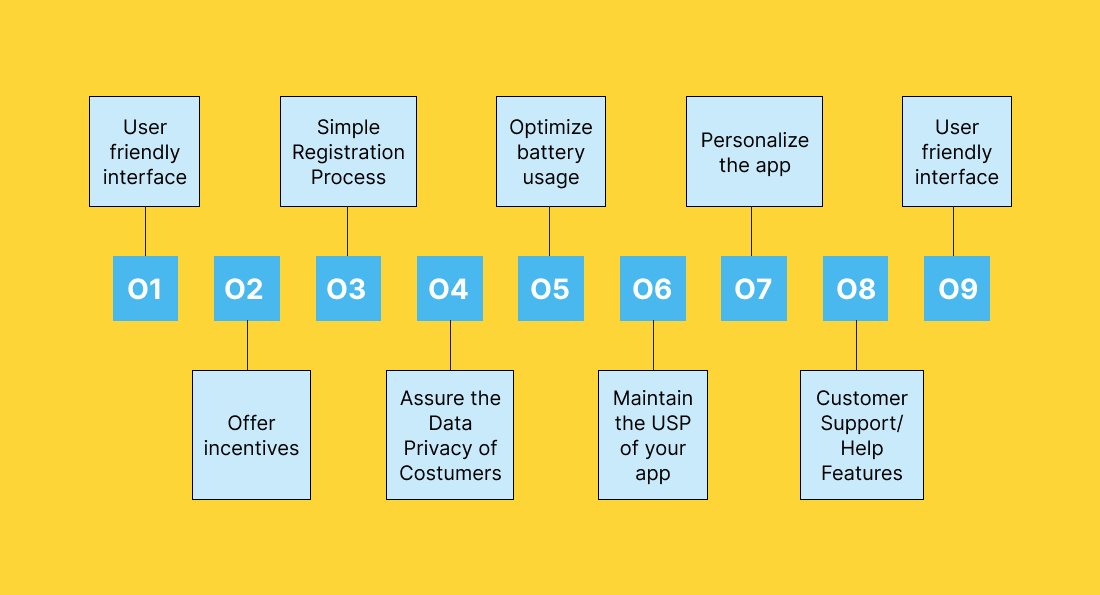
That's why putting the user first, always, is a fantastic way to ensure you are delivering quality. According to Yoni Svechinsky:
"UX is one of the most important things at Monadd, to maintain a high level of quality, we follow three rules:
Does this make sense? - The user journey needs to be clear for the user; at every point, everything should work exactly as expected.
Staging first - Nothing goes straight to the live environment. Big or small change goes first through the staging environment, where it gets tested.
Everybody tests - We have a checklist that everyone must go through for tests. No pushing to production before every person on the team greenlit the release."
- Yoni Svechinsky, Co-Founder & CTO, Monadd
If you need help determining where to focus your efforts, the ISO/IEC 25010:2011 quality model may be a good starting point. It's broken into five key characteristics that apply to all software products and systems, giving you an idea of what to start measuring, testing, and analyzing.
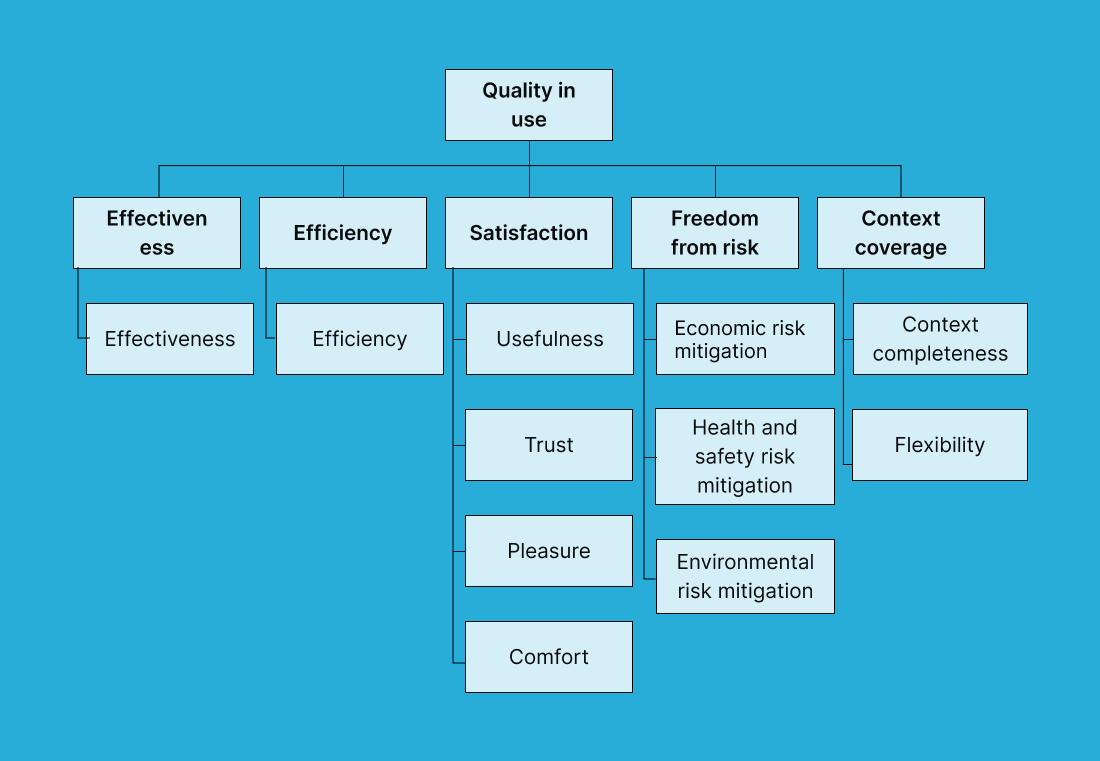
3) Test early and often
Even if you don't use the agile methodology, you shouldn't leave testing until the last minute. Regular testing and a structured QA strategy is a surefire way to ensure software quality. Multiple testing cycles combined with automation will catch the bugs that thinner testing strategies may have missed.
According to Naveen Kumar:
"Quality of software relies on testing often and involving testers very early in the design and development life cycle. Deploy a risk management practice to identify, assess, prioritize, measure, and mitigate. Once the product goes live, listen to customer feedback for a consistent improvement".
- Naveen Kumar, Performance Test Engineer, QAInsights.com
By testing early and often, you can catch bugs that could be more costly down the line. A study by Capers Jones found that 85% of software bugs are introduced in the design and build stages of development, sometimes even before a line of code is written. So, by testing early, you can work to fix these bugs before they make their way into release, ensuring software quality and saving you time in the long run. Of course, testing doesn't end when the product ships, either. Any configuration management plans you have in place need to make space for quality assurance, too.
4) Don’t just have one software testing method in your toolkit
According to Uzma Yasin, Head of Products and New Initiatives at Kualitatem, "correct understanding and scoping of testing requirements and identification of the testing types required" are both of vital importance to ensuring quality in the software you create.
By breaking down each part of your product you want testing (think features rather than lines of code) and deciding which testing method would be appropriate for that particular area, you can ensure you don’t waste precious time and resources on the wrong type of testing. This will deliver better results and better quality. Find out more about different testing types and testing according to product maturity here.
5) Slow down the process
If your dev and QA teams work under intense pressure to release by tight deadlines, the likelihood of technical debt will increase, and the quality of your products may decrease.
Unfortunately, technical debt is often inevitable, but slowing down the release process is a great way to reduce it. Take your time to put best practices in place and reduce the likelihood of costly fixes in the future.
According to Emad Georgy:
"One of the first things developers need to do to improve the quality of their software is to eliminate as much technical debt from the code as possible as early as possible in the process. Every architecture decision, technology stack decision, and even code review should have an eye for durability - does this progress our architecture forward? Will this scale for years to come, for 10x and onwards of our growth? Teams that succeed have metrics, accountability mechanisms, and processes in place that reveal the impact and risk to the long-term durability of these daily decisions."
- Emad Georgy, CTO of Georgy Technology Leadership
Evan Volgas similarly agreed with Emad's sentiments:
"Too often, engineering leaders allow their teams to get sucked into an endless race of adding more features without leaving any time to clean up the ones that have been added. Tech debt builds. People lose focus. They get frustrated and distrustful of existing codebases, preferring to write everything from scratch. If you want to ensure high-quality software, you have to give your engineers time to clean up after features are added. They also need time to orient their thinking around where to focus next."
- Evan Volgas, Data Productivity Engineer & founder of the Swarm Advisory Group
It's important to leave time to build testability into the product, not just functionality. A high degree of testability means a high degree of maintainability, which is key for any product you want to succeed.
How can Global App Testing help you deliver quality every time?
"As a perfectionist, the way that I ensure that the best product is put out is by asking myself if I would be proud to have it in my portfolio and on display. If I feel I would not be proud of it, then it does not align with my standards. We have built our organisation around others who feel and think the same."
- Joe Flanagan, Fitness App Developer at GetSongbpm
These steps will help you on your journey to delivering quality in the software you create:
- Create a quality culture with standardization of a software quality model
- Put the end user first
- Test early and often in the software development life cycle (SDLC)
- Slow down the process
Remember, entirely bug-free software isn't likely, and the perfect app is not possible. But, there are precautions you can take to safeguard the quality of your product and ensure a great customer experience. Book a call with one of our growth experts today for a free consultation to find out how you can ensure quality in every software release.
FAQ
How to ensure quality in software development?
Ensuring quality involves thorough planning, consistent testing, regular code reviews, and adherence to quality standards throughout the development lifecycle. It also includes effective communication within the development team and with stakeholders.
How can we measure quality in software development?
Quality is measured through various metrics like defect density, code coverage in testing, user satisfaction ratings, and adherence to requirements. Performance benchmarks and maintenance efforts also provide insights into software quality.
Which model ensures quality in software development?
Several models, such as the Capability Maturity Model Integration (CMMI) and ISO 9001, are designed to ensure quality in software development. These models provide frameworks for managing processes and ensuring continuous improvement.
Why is testing important in software development?
Testing is critical for identifying bugs and ensuring the software performs as intended. It's essential for maintaining the reliability and user satisfaction of the product.

